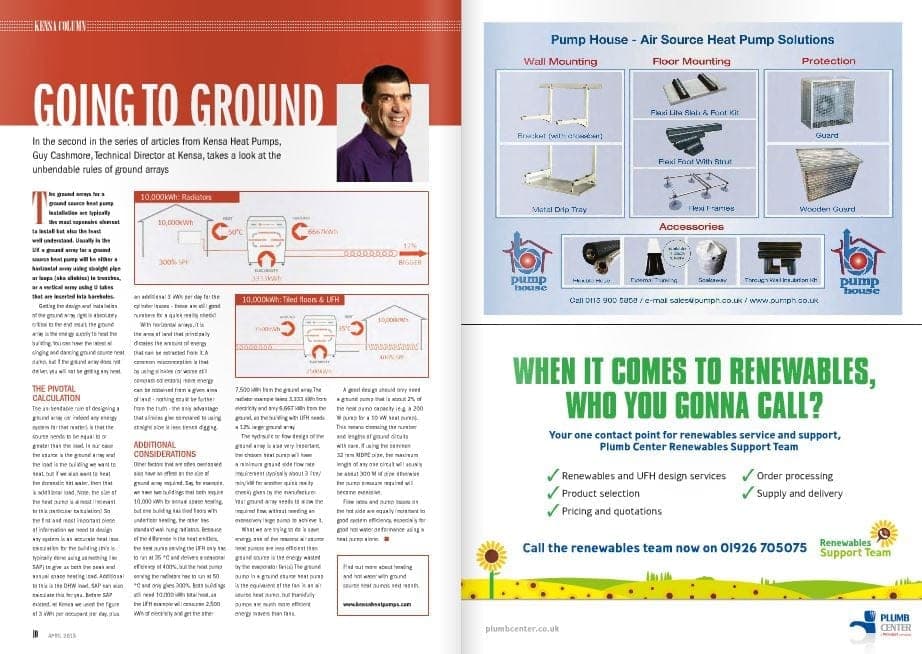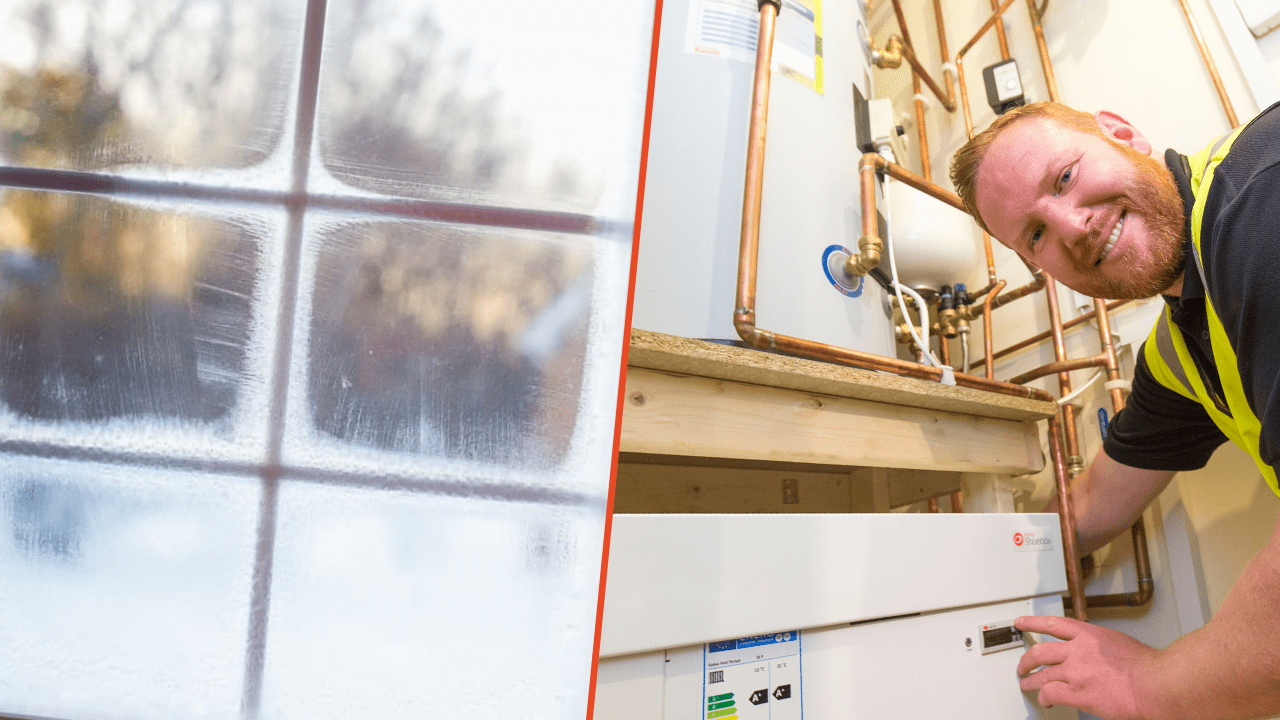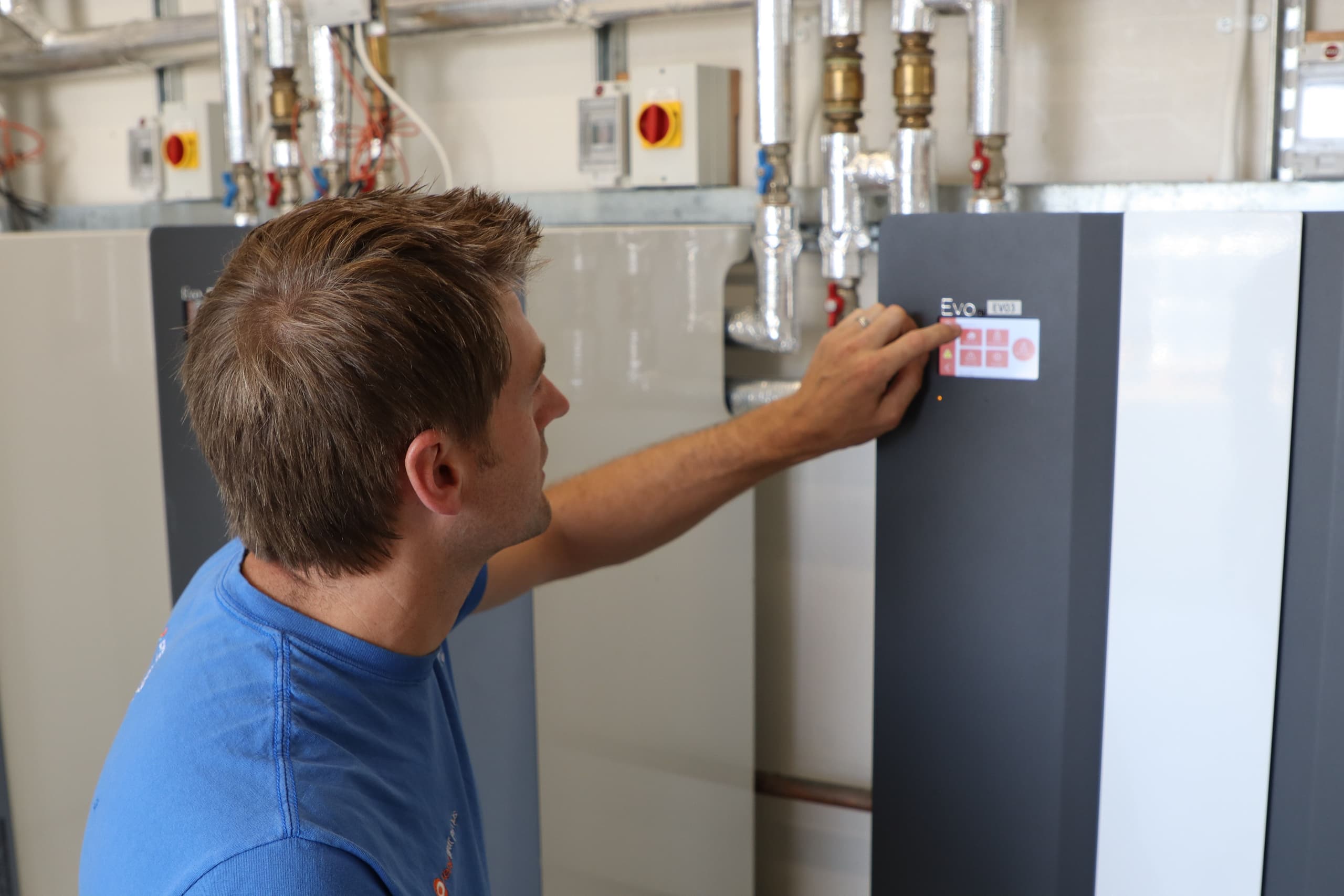Buffer Tanks - Sizing, Uses & Installation with a Heat Pump Expert
- Installers
- 5 min read
What’s the buffer tank for?
A buffer tank isn’t a common item on a traditional, boiler-based system, so some installers aren’t familiar with their use.
The most important thing to remember is that we’re trying to design the heat pump system to be as efficient as possible. After all, that’s why we’ve taken so much care getting the heat emitter sizing right, and that’s part of the reason your client has picked a ground source heat pump to begin with.
A ground source heat pump achieves a higher efficiency when it doesn’t have to keep stopping and starting its compressor too frequently. Stopping and starting too often (otherwise known as ‘short-cycling’), isn’t very efficient and can cause premature wear and tear. Smoothing out this ‘short-cycling’ is part of the buffer tank’s function.
What does a buffer tank do?
There is a minimum flow requirement across the ground source heat pump – just the same as with a boiler – in order to get heat away from the heat source and into the heating system. The longer we can maintain that minimum flow, the better.
As the heat pump system gets up to temperature, actuators on the underfloor will shut down and TRVs begin to close; all of this restricts flow around the system. To ensure that minimum flow across the ground source heat pump we use a buffer tank – it is essentially an uncontrolled part of the system.
It acts as a bypass of sorts by performing the same function that an automatic bypass valve would do on a traditional system.
To that end, you don’t have to use one – provided you can ensure that enough of the heating system remains uncontrolled (so no TRVs or actuator heads). This is generally around 25% of the total system volume.
Must the buffer tank be heated before the rest of the system?
No! Lots of heat pump manufacturers heat the whole buffer, bringing it up to temperature before heating the rest of the system to create a ‘reserve’ of heat, ready to input into the system once the call for heat returns.
Kensa doesn’t recommend doing this as it takes a lot of time and energy to heat the entire tank and heat is inevitably lost in the process, no matter how well insulated the tank is.
We believe it is much more efficient to simply generate the heat when you want to use it. The heat pump system doesn’t take long to get up to temperature, especially if your emitters are sized correctly, which is why we recommend connecting the buffer in a ‘2 pipe’ configuration.
How big should the buffer tank be?
Kensa suggests you size your buffer tank allowing 10 litres per kW of ground source heat pump output. So if you have a 10kW heat pump, a 100 litre buffer is needed. If you are using a twin compressor unit, you only need to account for one compressor; for example, a 16kW Twin heat pump is two 8kW compressors, requiring 80 litres of buffer volume.
In this case you may wish to use Kensa’s 100 litre buffer, which is a rectangular unit strong enough to have an unvented cylinder on top of it (up to 300 litres and subject to height clearance).
What about adding other heat sources?
A lot of clients hope to be able to feed the heat output from a wood burning stove into their heat pump system, or perhaps even use solar thermal to contribute to space heating. Whilst Kensa does offer buffers with an additional coil, remember that uncontrollable sources of heat such as wood burners can’t be fitted onto pressurised heating systems.
You will also have to be very careful with the heat pump’s control system – if the heat pump’s return temperature sensor is permanently ‘satisfied’ thanks to additional heat sources, then the ground source heat pump simply won’t operate. This is fine when you want the additional heat source to take priority over the ground source heat pump, but if that additional source is an immersion heater for example, this isn’t a good idea!
Also remember that if your customer wants to claim the Renewable Heat Incentive (this scheme has now closed), the system still needs to be MCS compliant. Adding other heat sources could have an impact on this, or mean that metering is required.
How do I pipe up a buffer tank?
You must install the buffer tank between the flow and return of the heating system only.
The flow is the first tee connection after the 3 port diverter valve. The return from the buffer must be the last tee into the heating return before it joins the return from the cylinder.
Ensure that the hot water cylinder is the last connection on the return pipe to the ground source heat pump.
Be very careful that you don’t pipe the system up in such a way that heat can be leeched from the hot water cylinder back through the buffer as this can cause issues with hot water performance.


